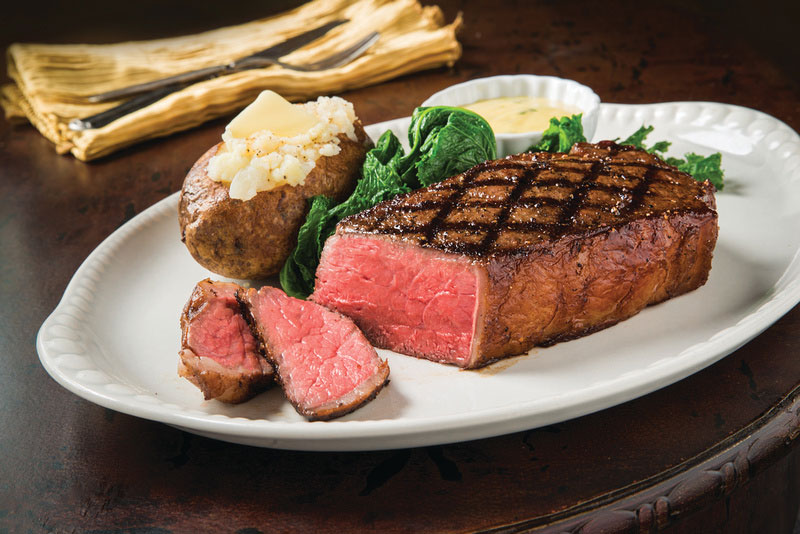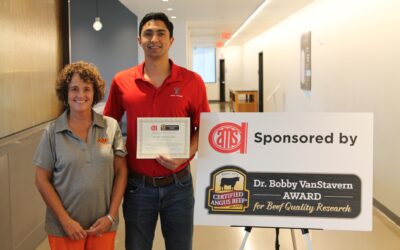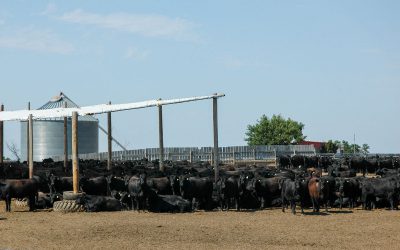
Keys may unlock cellular doors to marbling mysteries
By Miranda Reiman
October 9, 2009
Knowing more about marbling helps cattlemen produce the best beef. All four National Beef Quality Audits (NBQA) said consumers want more of it, yet many producers manage so as to inhibit rather than enhance marbling.
Scientists offered new insights at the Reciprocal Meats Conference this summer.
“Three major things affect the beef eating experience: flavor, juiciness and tenderness,” Brad Johnson, of Texas Tech University said. “In some direct or indirect way, marbling affects all three of those.”
Johnson, the university’s Gordon W. Davis Regent’s Chair in Meat and Muscle Biology, said marbling is a key to feedlot profits, too. Although the USDA Choice premium over Select fell off in the last year, he said beef industry sustainability hinges on its ability to produce more marbling with fewer inputs and lower carcass weights.
Matt Doumit, meat scientist at the University of Idaho, and Jean-Francois Hocquette, director of the National Institute of Agronomic Research at the Herbivore Research Institute in France, also shared research.
Doumit referenced the 2005 NBQA in noting too little marbling and too much back fat costs the beef industry more than $1.3 billion a year in lost profit.
Getting down to the test-tube level, Johnson and his team isolated bovine muscle cells and then used different steroids, fatty acids and other compounds to manipulate the individual cells. In the beginning these cells are all the same, he said, but then they differentiate into muscle or adipocytes – fat cells.
“The hallmark of an adipocyte is its ability to fill with lipids—triglycerides—as a storage mechanism,” Johnson explained. “We’ve seen that some of these compounds may be having profound effects, from a gene expression standpoint, at pushing cells to become adipocytes.”
That’s not an easy task, he added: “Working with muscle cells, I truly believe we have to go out of our way to make them become something else. A muscle cell wants to be a muscle cell.”
The use of growth implants directs a cell to become muscle and therefore decreases marbling, Johnson said. On the other hand, feeding melengestrol acetate (MGA) actually improved marbling, but also increased back fat.

Three compounds assist in marbling activation and alter the key genes when cells are being allocated as either muscle or fat.
“We were able to get multi-nucleated cells,” Johnson said, “which makes you believe they still have muscle characteristics, but also some mono-nucleated cells that could fill with lipids.”
Doumit’s team is looking at ways to increase both number and size of fat cells, to affect marbling independent of back fat.
“There’s some evidence that fat cells are not just fat cells and preadipocytes are not just preadipocytes,” Doumit said. “They respond to things in a different manner.”
Ibuprofen is just one example of a compound that has been shown to increase intramuscular fat formation.
“It’s probably not ibuprofen we’re looking for, but it points to the opportunity to preferentially affect fat depots,” he said. “It’s possible we can find other naturally-occurring compounds that will preferentially stimulate intramuscular fat over subcutaneous fat.”
Hocquette reminded the audience that genetic potential plays a major role in an animal’s ability to marble, but nutrition is a key to that potential.
“The increase in intramuscular fat is higher when animals are in the feedlot finishing system compared to grass finishing,” he said. “This can be explained by the higher level of glucose in the feedlot diet, and more secretion of insulin, which is known to promote adipogenesis.”
That’s good news for all who hope to increase the good fat while holding the waste fat at bay.
“If we understand the biological differences better, there will be opportunities to develop effective strategies to manipulate these different fat depots,” Doumit said. “That will improve the efficiency of livestock production as well as increase the quality of the product.”
You may also like
Purpose Follows Passion
A chance opportunity. A change in career direction. And meat science was changed forever. Dr. Gary Smith originally had no plans to become a meat scientist. But thank goodness he did.
Certified Angus Beef Recognizes Beef Quality Research
First-place honors go to Andres Mendizabal, an international student pursuing a Ph.D. in animal science at Texas Tech University. His research is titled, “The Accuracy of USDA Yield Grade and Beef Carcass Components as Predictors of Red Meat Yield.”
Not all good days are sunny and warm
Stress of any kind affects performance and health, but also well-being and behavior, a special focus for CSU animal scientist Lily Edwards-Callaway. Her team’s literature review found shade benefits vary by location, structure type and the weather.



